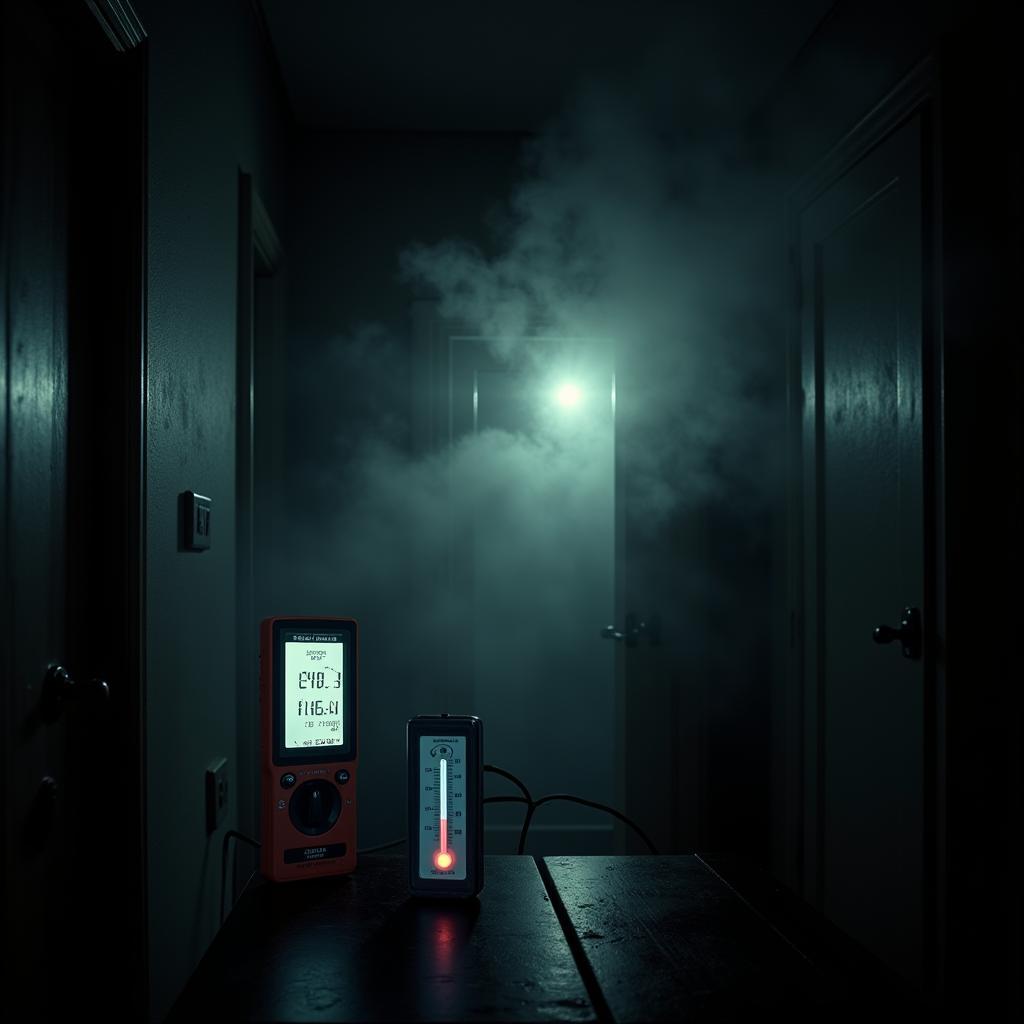Quantitative Research Measurement Tools play a crucial role in the investigation of paranormal phenomena. By applying scientific rigor and statistical analysis, we aim to move beyond subjective experiences and anecdotal evidence to gather objective data that can shed light on these mysterious occurrences. This approach allows us to explore the unknown with a focus on measurable data and verifiable results.
Exploring the realm of the paranormal through quantitative research necessitates a meticulous approach to data collection and analysis. This involves selecting appropriate measurement tools, designing robust experimental protocols, and employing rigorous statistical methods. By adhering to these principles, we can strive to achieve objectivity and minimize bias in our investigations. It’s similar to how we approach research electro optics, applying scientific methodology to seemingly intangible phenomena.
What are Quantitative Research Measurement Tools in Paranormal Investigations?
Quantitative research measurement tools in paranormal investigations encompass a variety of instruments and techniques designed to quantify aspects of allegedly supernatural events. These tools can range from sophisticated electronic devices that measure electromagnetic fields and temperature fluctuations, to standardized questionnaires and scales that assess psychological and physiological responses in individuals experiencing paranormal phenomena. The goal is to collect numerical data that can be statistically analyzed to identify patterns, correlations, and potential causal relationships. This objective approach is central to all our research, as outlined in our introduction to health research methods.
Utilizing EMF Meters and Thermometers in Paranormal Research
Electromagnetic field (EMF) meters are frequently employed to detect fluctuations in electromagnetic fields, which some paranormal investigators believe are associated with the presence of spirits or other supernatural entities. Similarly, thermometers are used to identify unexplained temperature changes, often cited as another indicator of paranormal activity. These tools, while commonly used, require careful interpretation to rule out natural explanations.
 EMF Meter Detecting Temperature Fluctuations in a Haunted Location
EMF Meter Detecting Temperature Fluctuations in a Haunted Location
Psychological and Physiological Measurements in Paranormal Studies
In addition to physical measurements, quantitative research in paranormal investigations also incorporates psychological and physiological assessments. Standardized questionnaires and scales can be used to measure individuals’ beliefs, experiences, and emotional responses related to paranormal phenomena. Physiological measures, such as heart rate, skin conductance, and brainwave activity, can provide objective indicators of an individual’s physiological state during alleged paranormal encounters. Understanding research terms and definitions is crucial for interpreting these measurements.
How to Interpret Quantitative Data in Paranormal Research?
Interpreting quantitative data in paranormal research requires careful consideration of potential confounding factors and alternative explanations. Statistical analysis plays a vital role in determining the significance of observed patterns and correlations. While a statistically significant result may suggest a relationship between certain variables, it does not necessarily prove a paranormal cause. Rigorous investigation and critical evaluation of the data are essential to minimize the risk of misinterpreting findings. For a broader perspective on research methodologies, explore our resources on describe the three basic methods of ecological research.
 Analyzing Paranormal Data with Statistical Software
Analyzing Paranormal Data with Statistical Software
“Quantitative research provides a framework for exploring the paranormal, but it’s crucial to approach the data with a critical and discerning eye,” advises Dr. Evelyn Reed, a leading researcher in parapsychology.
Addressing Common Misconceptions about Quantitative Research in Paranormal Investigations
One common misconception is that quantitative research can definitively prove or disprove the existence of paranormal phenomena. While quantitative methods can provide valuable insights and evidence, it’s important to acknowledge the limitations of current research tools and methodologies. Dr. Reed adds, “The paranormal, by its very nature, often defies easy measurement and quantification. Our research is an ongoing process of exploration and discovery.”
 Challenges in Quantitative Paranormal Research
Challenges in Quantitative Paranormal Research
Conclusion: The Future of Quantitative Research and Paranormal Investigations
Quantitative research measurement tools provide a valuable framework for investigating paranormal phenomena. By combining rigorous methodology with a commitment to objective data analysis, we can continue to explore the mysteries of the unknown. As our understanding of both the paranormal and our research methods evolves, we can anticipate even more insightful discoveries in the future. For more insights into paranormal research, explore our 360 research reports. Remember, the journey of discovery is ongoing, and the quest for understanding the paranormal continues with every new piece of data.
FAQ
- What are the most common quantitative research measurement tools used in paranormal investigations?
- Can quantitative research prove the existence of ghosts?
- What are some limitations of using quantitative methods in paranormal research?
- How can I learn more about quantitative research methods?
- Are there any online resources for paranormal research data?
- How can I get involved in paranormal research?
- What are some ethical considerations in paranormal research?
Common Scenarios and Questions in Paranormal Research
- Scenario: Unexplained temperature drops in a specific location. Question: Are there any other environmental factors that could be causing these temperature changes?
- Scenario: EMF meter spikes during an investigation. Question: Are there any known electromagnetic sources nearby that could be influencing the readings?
- Scenario: A witness reports seeing a ghostly apparition. Question: Could the witness’s perception be influenced by psychological factors or environmental cues?
Further Exploration
Explore our other articles on related topics, such as “The Science of Ghost Hunting” and “Understanding Parapsychology.”
Need help with your Paranormal Research? Contact us 24/7: Phone: 0904826292, Email: research@gmail.com Or visit us at: No. 31, Alley 142/7, P. Phú Viên, Bồ Đề, Long Biên, Hà Nội, Việt Nam.